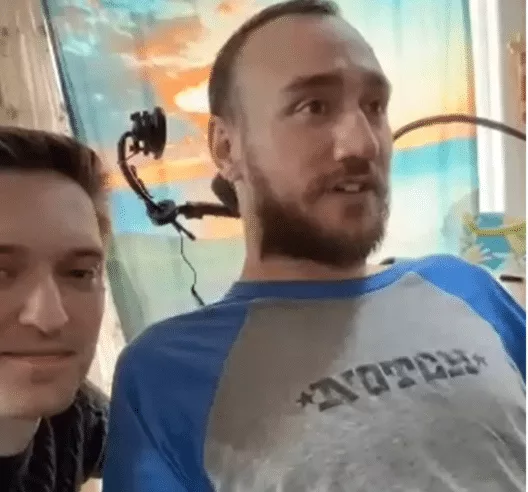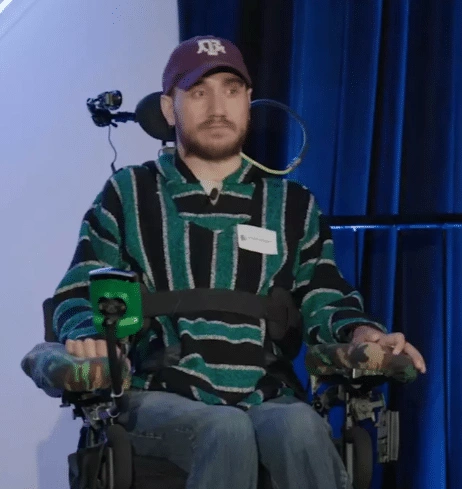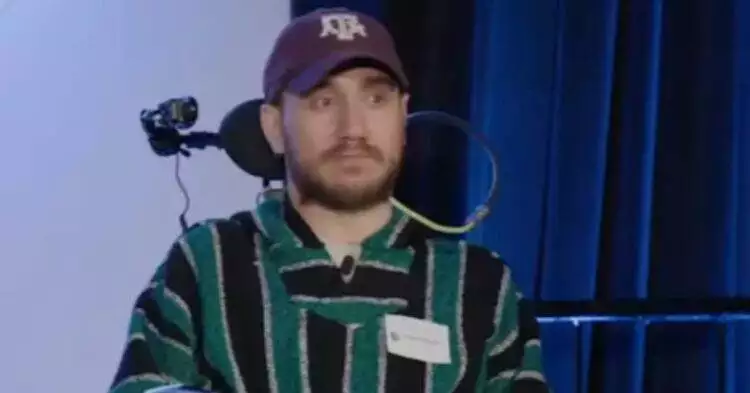Noland Arbaugh, 30, became the first person to get a brain chip implanted from the US neurotechnology firm Neuralink in January 2024, eight years after he was paralyzed from the shoulder down. Now, he speaks on what using the brain chip has been like.
Noland explained he knew the risks
Explaining to the BBC why he chose to be a participant of Neuralink, Noland said he cared about the science of it all.
“Good or bad, whatever may be, I would be helping,” Noland said as he explained he knew the risks. “If everything worked out, then I could help being a participant of Neuralink. If something terrible happened, I knew they would learn from it.”
Noland spoke about not having had privacy

The 30-year-old from Arizona said that following a driving accident in 2016, he became paralyzed from the shoulder down, which had taken away his privacy as he has had to rely on other people for everything.
“You just have no control, no privacy, and it’s hard,” he said, adding, “You have to learn that you have to rely on other people for everything.”
Neuralink has helped restore some of his independence
Noland has been able to have a fraction of his independence back through the brain chip which allows him to control a computer with his mind.
The chip works as a ‘brain computer interface’ (BCI) which detects small electrical impulses that are generated when humans think about moving and translates them into a digital command.
He was able to move a cursor by thinking about moving it

After getting the chip fitted, Noland was able to control a cursor by simply thinking about moving it. “Honestly I didn’t know what to expect – it sounds so sci-fi,” he said.
Noland has also grown into being able to use the chip to play video games, something he had “had to let go of” when he became paralyzed. “Now I’m beating my friends at games, which really shouldn’t be possible but it is,” he said.
The chip doesn’t come without its challenges
Noland also shared that he hopes the chip will eventually allow him to control his own wheelchair.
But using the chip didn’t come without its challenges as he told the BBC there was a moment where it ‘disconnected’ from his brain and he lost control of his computer. “That was really upsetting to say the least. I didn’t know if I would be able to use Neuralink ever again,” he said.
Thankfully, the chip was then restored and returned to functioning properly for him.
Neuralink isn’t the first to create such a chip
The Elon Musk founded neurotechnology firm isn’t the first one to develop and implant brain chips but is the one that has gained the most popularity due to the attention its founder receives.
It aims to give paralyzed people independence
Neuralink has said that one of their end goals is to give paralyzed individuals more independence, “Our current work is focused on pushing cursor control performance to the same level as that of able-bodied individuals, and on expanding functionality to include text entry.”
“In the future we intend to extend the Link’s functionality to the physical world to enable control of robotic arms, wheelchairs, and other technologies that may help increase independence for people living with quadriplegia.”
The chip can change lives but has its drawbacks too
While Noland is a great demonstration of how the neurotechnology can help change people’s lives for the better, it doesn’t come without its drawbacks.
Anil Seth, Professor of Neuroscience in the University of Sussex, told the BBC that “one of the main problems is privacy”.
“So if we are exporting our brain activity […] then we are kind of allowing access to not just what we do but potentially what we think, what we believe and what we feel,” he said. “Once you’ve got access to stuff inside your head, there really is no other barrier to personal privacy left.”

















































